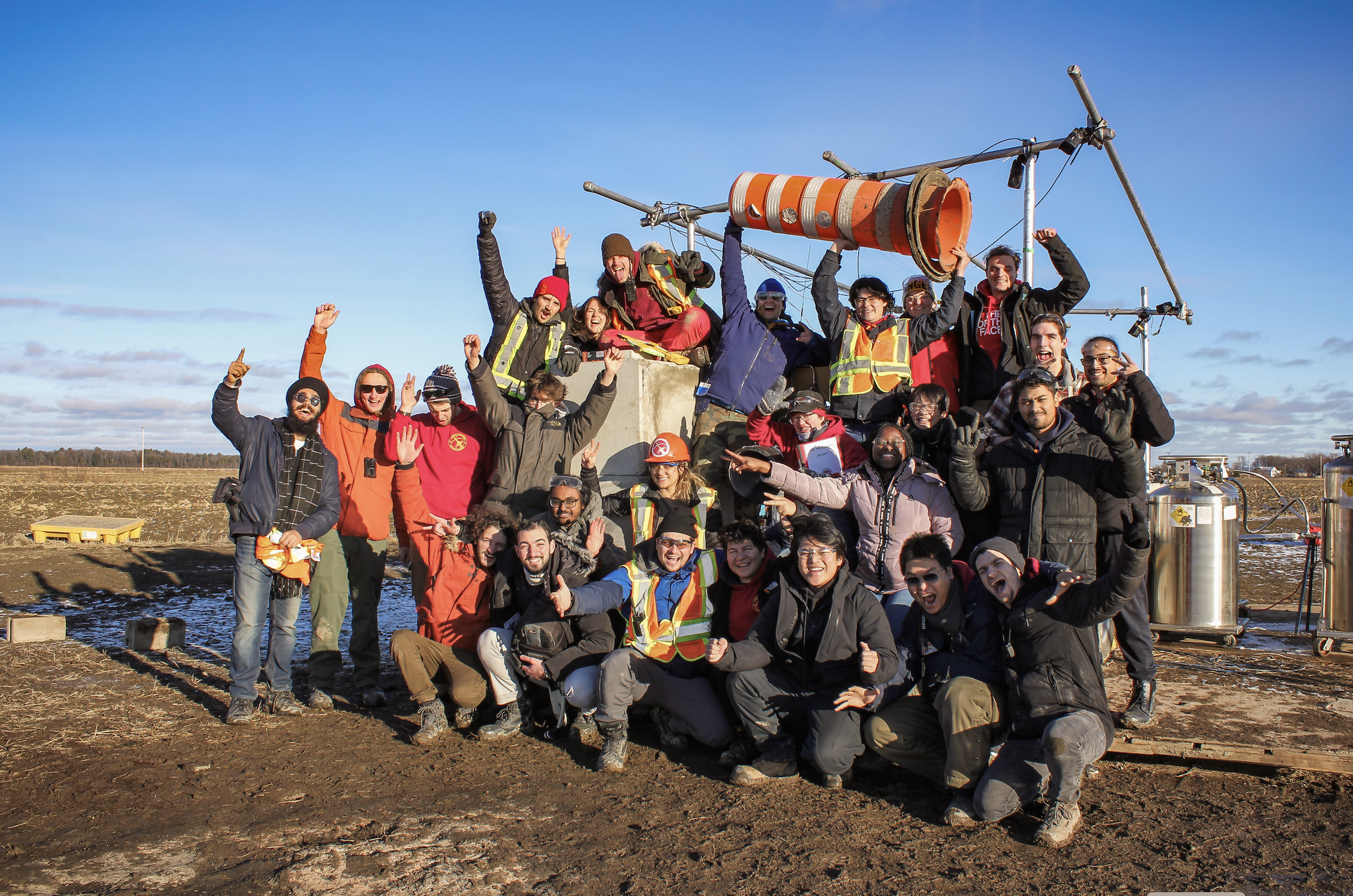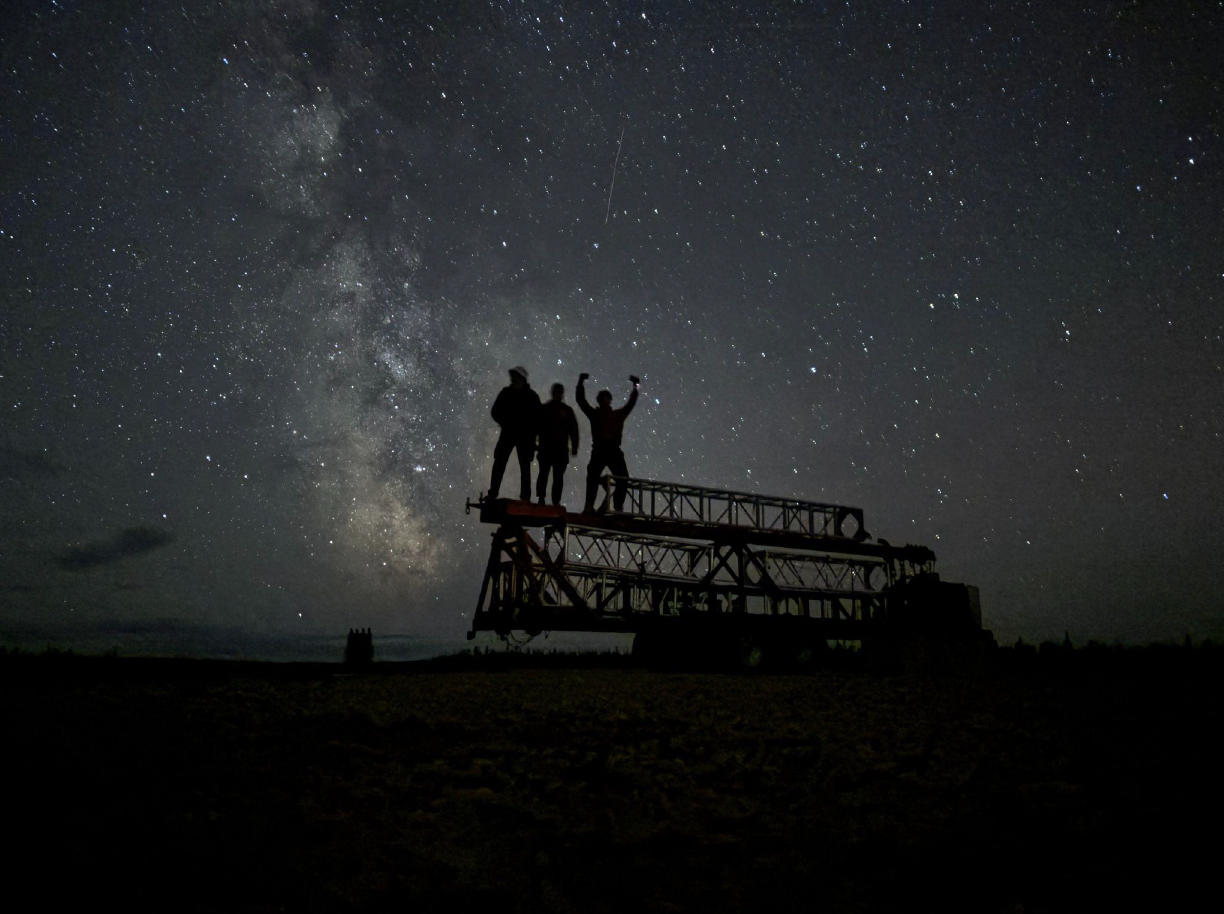Student Rocketry Team to Launch "Starsailor", COPA members invited to join SAR efforts

STUDENT ROCKET RECEIVES TRANSPORT CANADA APPROVAL TO REACH SPACE
Transport Canada Grants Historic Approval for Space Concordia’s Suborbital Mission
UPDATE (Aug. 15, 2025, 2:30 p.m. EDT): Starsailor successfully launched today, August 15, 2025, at 5:00 a.m. EDT
Space Concordia Rocketry Division, the student rocketry association based at Concordia University’s Gina Cody School of Engineering and Computer Science in Montreal, has received formal authorization from Transport Canada to launch the most powerful student-built rocket in the world to space. It is the first time such approval has ever been granted in Canadian history. The rocket, named Starsailor, is scheduled to launch between August 8 and 18, 2025, from Mistissini, Québec, in collaboration with the Cree Nation.
The launch marks three historic milestones: the first-ever student-built rocket authorized by Transport Canada to reach space, the first space launch from Canadian soil in the 21st century, and the very first space launch in Québec’s history.
As Henri Takahashi-Massicotte, the Rocketry’s Division Team Captain, reflected:
“Launch is the ultimate test to validate all our work. We’ve done all we could test on the ground and it’s time to leave the nest and take the skies.”
The mission received the support of COPA (Canadian Owners and Pilots Association), whose network of passionate aviators will assist in the post-flight recovery of the rocket. Once Starsailor returns to Earth, COPA pilots can play a crucial role in locating the payload and analyzing its condition, an essential step in completing the mission and securing its scientific data.
A Technological Milestone in Student Aerospace
Standing 42 feet tall and weighing over 800 kilograms, Starsailor is a fully student-engineered, bipropellant rocket, designed to reach an altitude of over 100 kilometers, the internationally recognized boundary of space. It is powered by the Stewart engine, a high-performance liquid-fueled motor producing 35 kilonewtons of thrust, developed entirely in-house.
Behind Starsailor lies not only an engineering innovation but a story of determination, failure, perseverance, and collective belief. The Starsailor project began in 2018 with the participation of the rocketry division at the Base 11 Space Challenge until the Covid-19 pandemic put an end to the competition. Regardless, the team decided to move forward with the project, going so far as to leak-test the engine in their own bathtub, despite the pandemic.
For over seven years, hundreds of students devoted their nights, weekends, and entire years to a mission many believed impossible. There were blown engines, shattered test rigs, and countless versions of software, hardware, and paperwork, but the team pressed on. Since then, the team has been working to make the impossible, as written on their website. To this day, they have completed 17 static fire engine tests and conducted rigorous structural, thermal, and electronic testing to meet national safety and regulatory standards. As Oleg Khalimonov, the Program Lead of Space Concordia Rocketry Division, once said:
“The engineering was never the hard part.”
The hardest part was never designing the rocket; it was believing that it was possible when others did not, learning everything from scratch, and carrying out a project of this scale with limited funding and no roadmap. Balancing coursework, jobs, and everyday life to spend late nights building something that could never be accomplished alone. And yet, through every setback and every breakthrough, the mission endured. Students found sites to test engines, did the steps necessary to acquire permits in a country where no student had ever launched a rocket to space, and kept momentum alive through the isolation of a pandemic. Over seven years, more than 700 students have taken up the torch, each generation building on the last, bound by a shared ambition to make the impossible become reality. Starsailor became more than a rocket, it was an entire space program.
Cultural Partnership with the Cree Nation of Mistissini
The Starsailor mission is more than a technological milestone; it represents a rare convergence of science, culture, and community. Space Concordia is deeply honored to launch in collaboration with the Cree Nation of Mistissini, whose support has been vital in bringing this historic event to life. This partnership goes far beyond logistics: it reflects a shared desire to inspire the next generation, foster meaningful dialogue, and create lasting bonds between student engineers and the people of Eeyou Istchee.
In the lead up to launch, Space Concordia is organizing educational and cultural engagement activities in Mistissini, offering youth and community members the chance to interact directly with the rocket team and to unveil the science behind the mission. By integrating the local community into the heart of the project, Space Concordia aims to lay the foundations for a lasting relationship based on respect, dialogue, and mutual inspiration. As Pamela Macleod, a member of the Mistissini Council, expressed:
“We are truly excited to have our community of Mistissini be a part of this unique and historic event. This space launch creates an opportunity for meaningful exchange and an interesting learning experience for our community members, especially our youth, and the Space Concordia team. We support and aspire to making this project successful.”
Follow the Journey
Audiences will be able to watch the Starsailor launch in real time via a public livestream. Details regarding the exact launch date and time will be shared on Space Concordia Rocketry Division’s Instagram and LinkedIn pages as the launch window approaches.
In parallel, a feature-length documentary titled “6 Months to Launch: An Underdog’s Journey to Space” is currently in production. The film traces the evolution of this extraordinary student-led mission—from seven years of relentless development to the moment of liftoff. Its Kickstarter campaign has already garnered early momentum, reflecting strong public interest in this uniquely Canadian story. Supporters can help bring the film to life and share the team’s journey with a global audience by contributing through the live campaign.
About Space Concordia
Founded in 2013, the Space Concordia Rocketry Division is one of Canada’s leading student-run aerospace teams. Based at Concordia University’s Gina Cody School of Engineering and Computer Science, it is dedicated to pushing the boundaries of student rocketry and engineering innovation.
Between 2016 and 2019, the team consistently participated in the Intercollegiate Rocket Engineering Competition (IREC) and the Spaceport America Cup, where it achieved a flawless record of launches and recoveries.
In 2018, following a series of successful missions, Space Concordia made university history when its rocket Supersonice earned 1st place in both the Advanced Rocket and Payload categories, becoming the first Concordia University team to win an international collegiate engineering competition.
Building on this momentum, the team embarked on its most ambitious project to date: Starsailor, a fully student-engineered bipropellant rocket, designed to reach the edge of space. Despite the challenges posed by the COVID-19 pandemic, the team persevered, completing the full-scale manufacturing of the flight vehicle and carrying out intensive engine and systems testing.
Today, Space Concordia Rocketry Division stands as a leader in student aerospace innovation, with Starsailor representing the culmination of over a decade of progress, passion, and perseverance.

